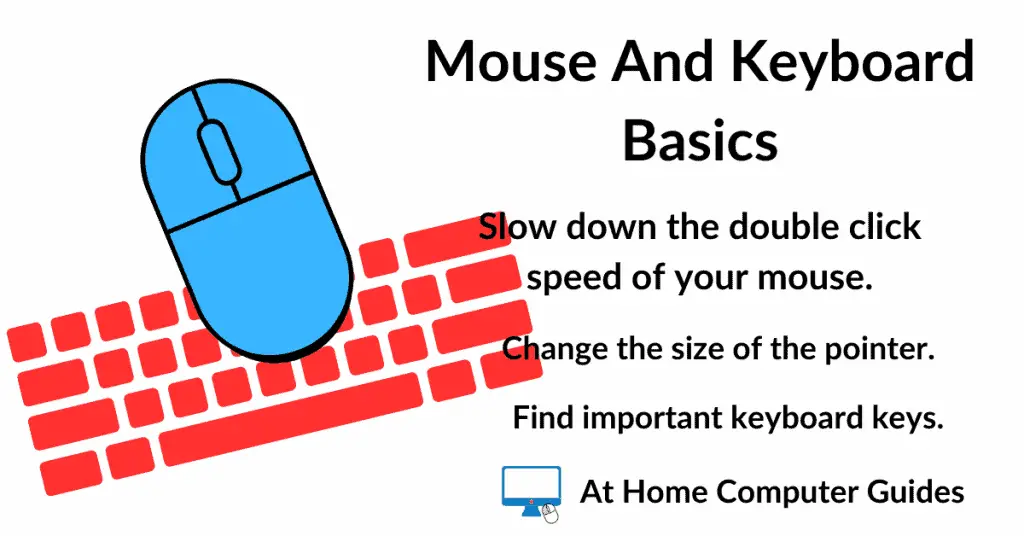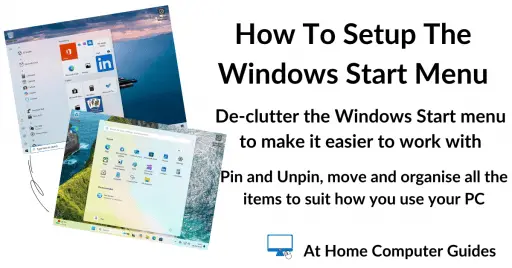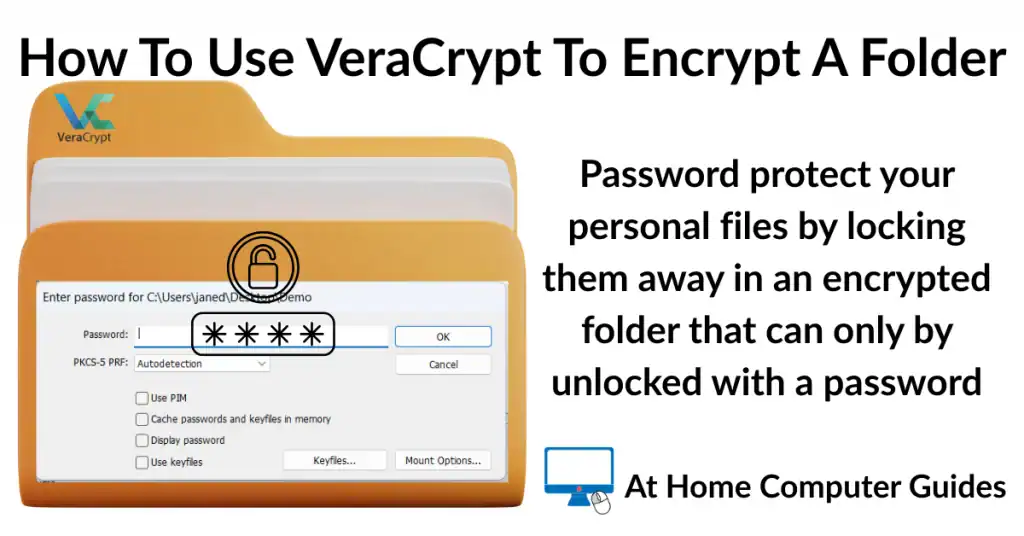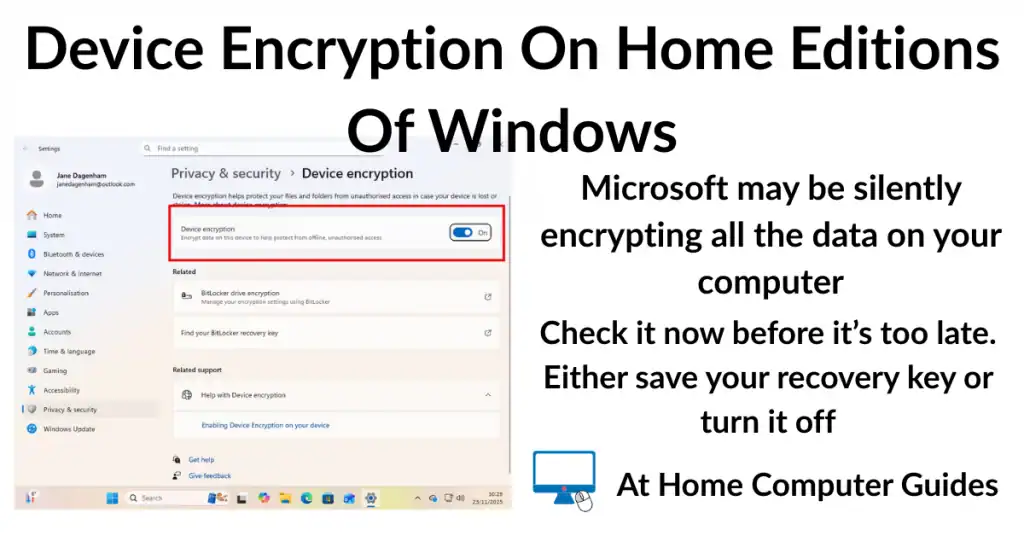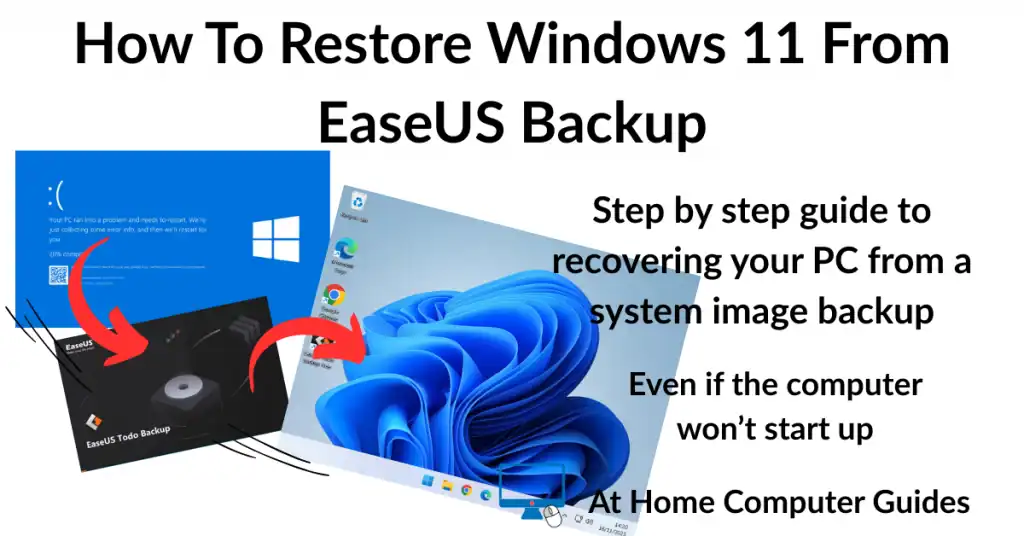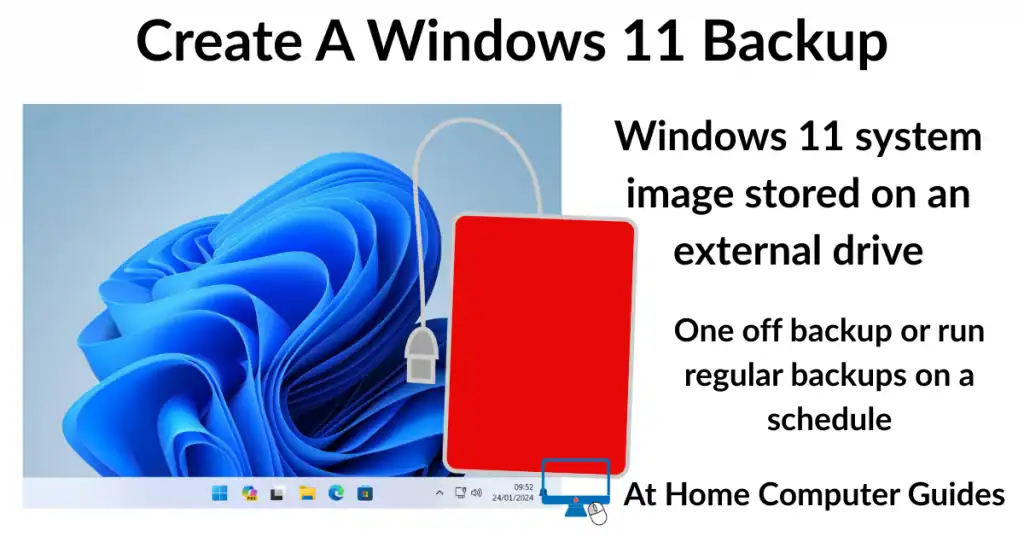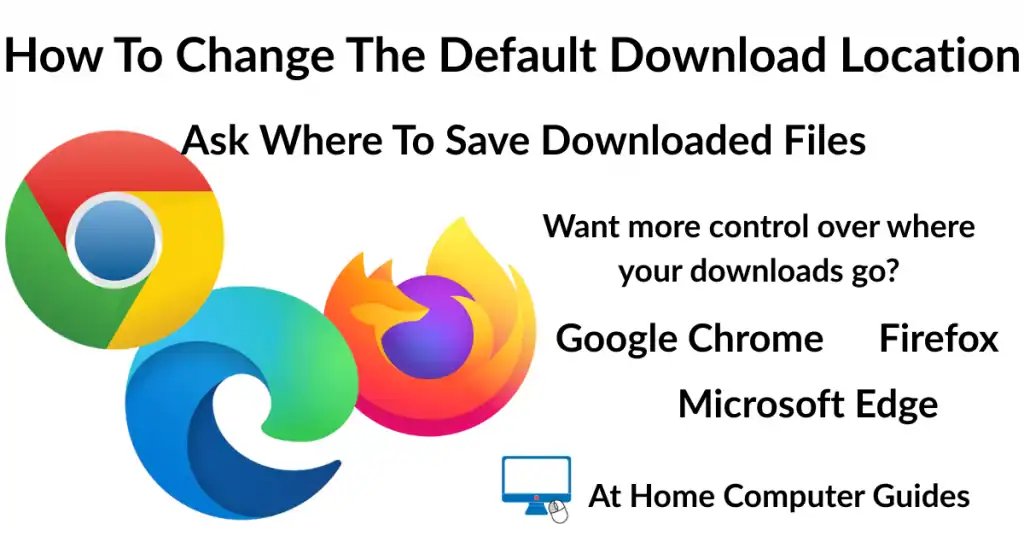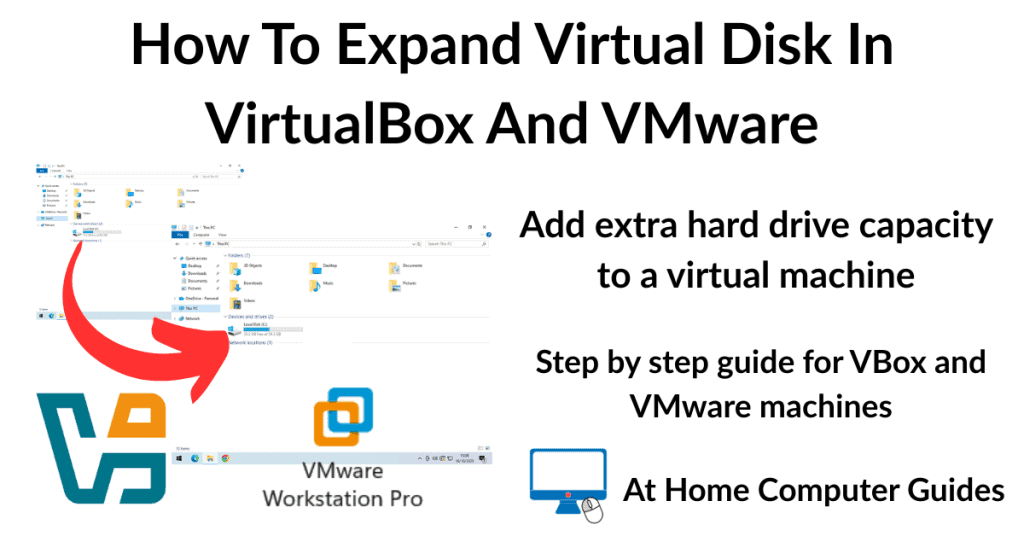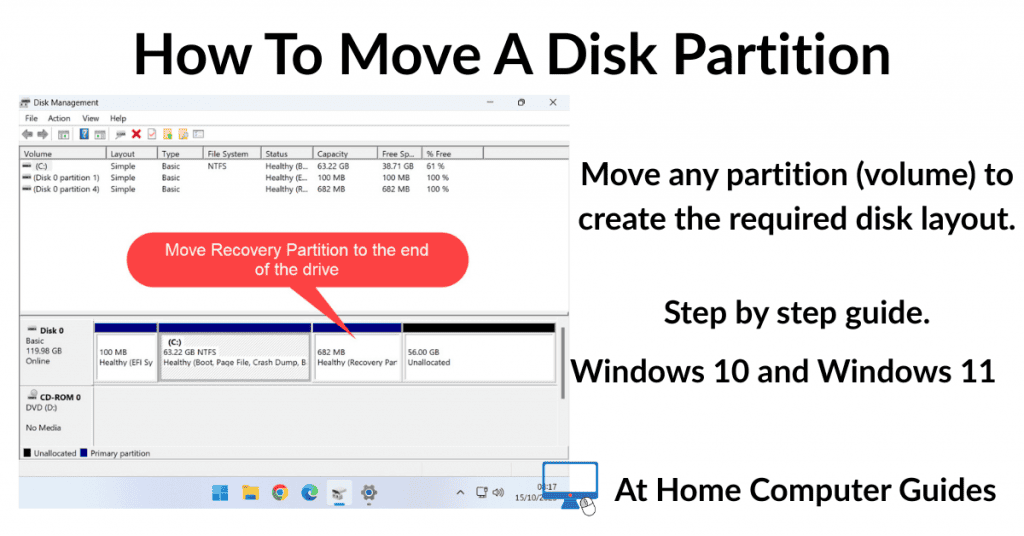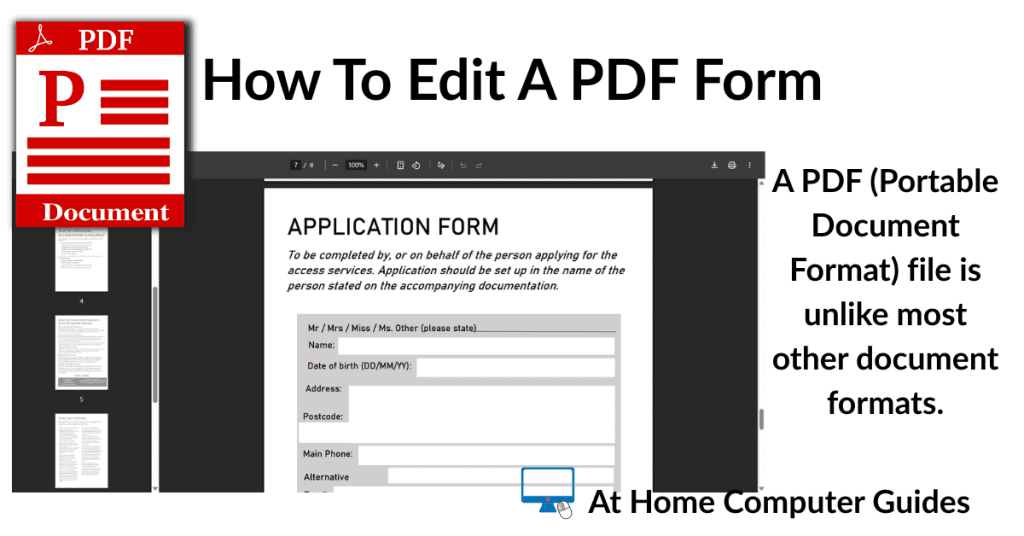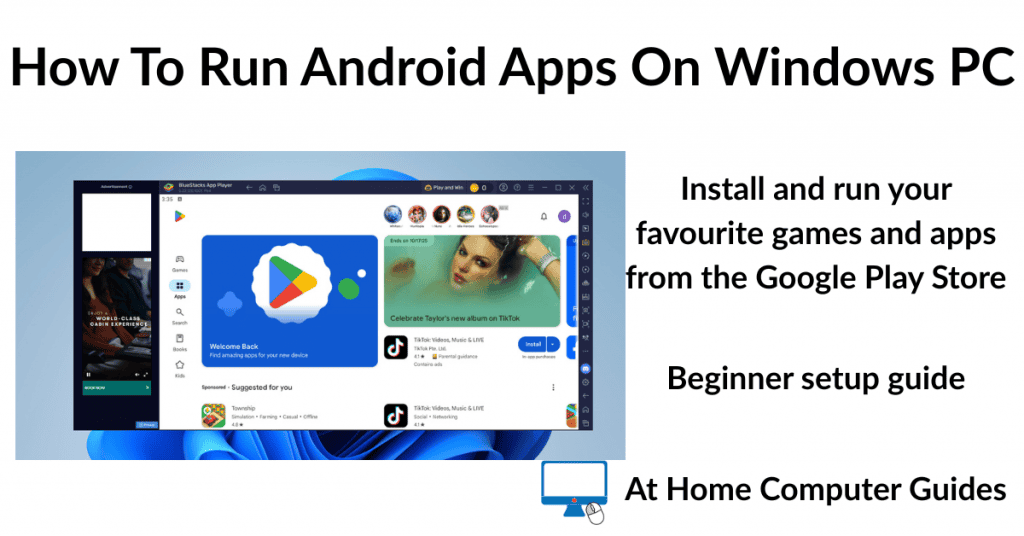To kick off the basic computer course for beginners, we’ll start with the computer mouse and keyboard basics.
For beginners, the mouse is the primary input tool for using a home PC. While it seems simple, just point and click, there’re two common settings can be a source of endless frustration.
The double-click speed is often set too high (or too fast) for many people. That causes double clicks to be “missed” by the computer. And then the pointer size is frequently too small. We’ll adjust both of these settings to make it easier and more comfortable to use your computer.
The keyboard generally works right out of the box and most people can use it easily enough (you really don’t need to be a speed typist). However, there are some essential keyboard keys that I want to point out to you that’ll make using you’re computer easier and faster.
It all helps to take the frustration out of using a PC.
How To Change The Mouse Double Click Speed
The double left click speed of the computer mouse is the setting that controls how quickly you need to double left click it in order for the computer to register it. For most beginners (and me), it’s usually set too high.
You can slow down the double click speed to make it easier to use. It’s easy to do and can be undone at any time.
To change the double click speed, left click on the Start button and then type “mouse settings“ without the quotes.
As you type, Windows will try to guess what you’re looking for. You’ll see the suggestions appearing and disappearing in the results panel as you add more letters.
Left-click once on Mouse Settings (System Settings), which will eventually appear at the top of the list.


Windows 10 Users.
If this is the first time that you’ve searched for something from the Start menu, then you might be wandering where do you type? There doesn’t seem to be a box to type in to.
In Windows 10, the search box appears as soon as you begin typing. Try it for yourself. Just click on the Start button and then begin typing, you’ll see the search box will appear.
The Mouse Settings Page
On the Mouse Settings page, look for the Related Settings section.
You might need to scroll down a little, or if you’ve got a wide screen monitor, it might be over on the right-hand side of the screen.
When you find the Related Settings, in Windows 10 left-click Additional Mouse Options.
And for Windows 11 users, left-click Additional Mouse Settings (Pointer Icons & Visibility).


Change The Mouse Double Click Speed
The Mouse Properties window will open. Click on the Buttons tab (if you’re not on the Buttons tab already).
In the middle of the Buttons tab window, you’ll see the Double-Click Speed section.
To slow down the double click speed, put your pointer onto the slider, hold down the left mouse button and move your mouse to the left.
You’ll see the slider move with your mouse.
Personally, I’d go all the way to the left, as far as it can go. It’ll give you more time and make the mouse easier to use.

When you’re done, click the OK button and close all the open windows.
Try double clicking on a few items (e.g. folders or program shortcuts on your desktop). You’ll find that they will open first time, every time. It’s much easier to use a mouse when the double click speed has been slowed down.
Mouse Properties On A Laptop.
If you’re using a laptop, then the Mouse Properties box will probably look a little different.
However, it’s actually the same window but with additional settings for your touchpad.
Across the top of the window, you’ll see some tabs.
To change the double click speed, just click on the Buttons tab and then use the double-click slider to slow it down.

How To Change The Mouse Pointer Size.
Another thing that can be annoying is the size of the mouse pointer (or cursor). It can often appear very small, too small. Then pointer becomes difficult to find on the screen and you end up shaking the mouse to try to find the pointer.
So if you find that you’re constantly searching across your PC screen to located the mouse pointer, make it bigger.
To change the size of the mouse pointer, open the Mouse Settings page just as you did above. Click Start > type “mouse settings” > click Mouse Settings (system settings).
When the Mouse Settings page opens, go to the Related Settings section again.
In Windows 10, click Adjust Mouse & Cursor Size.
And if you’re using Windows 11, click Mouse Pointer and Touch (Pointer Size & Colour).
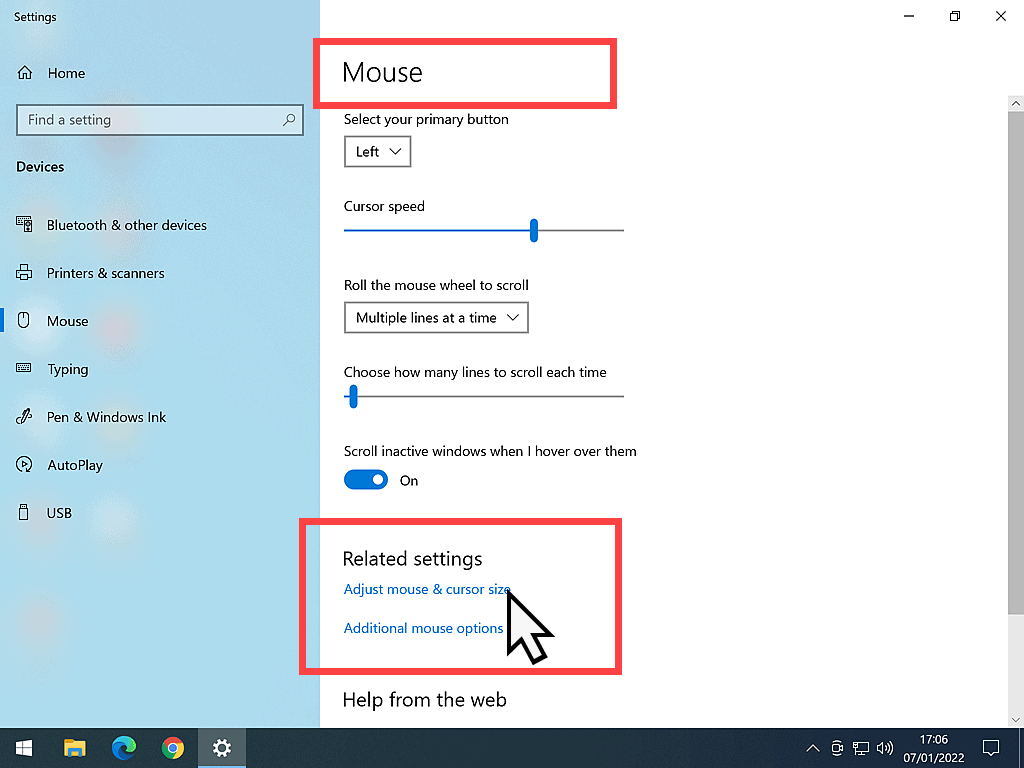

Changing The Mouse Pointer Size
To change the size of your mouse pointer (cursor), drag the slider left or right. To the left makes the pointer smaller and to the right makes it larger.
In case you’re wandering, there isn’t a “correct” size for a mouse pointer. It really is a personal choice.
It’ll depend very much on the screen that you’re using, and of course, your own eyesight. But if you want a recommendation, then I’d set the size to either 2 or 3. You don’t want it to become so big that you can’t see what’s underneath it.
When you’re happy just close the window by clicking on the X in the top right corner.
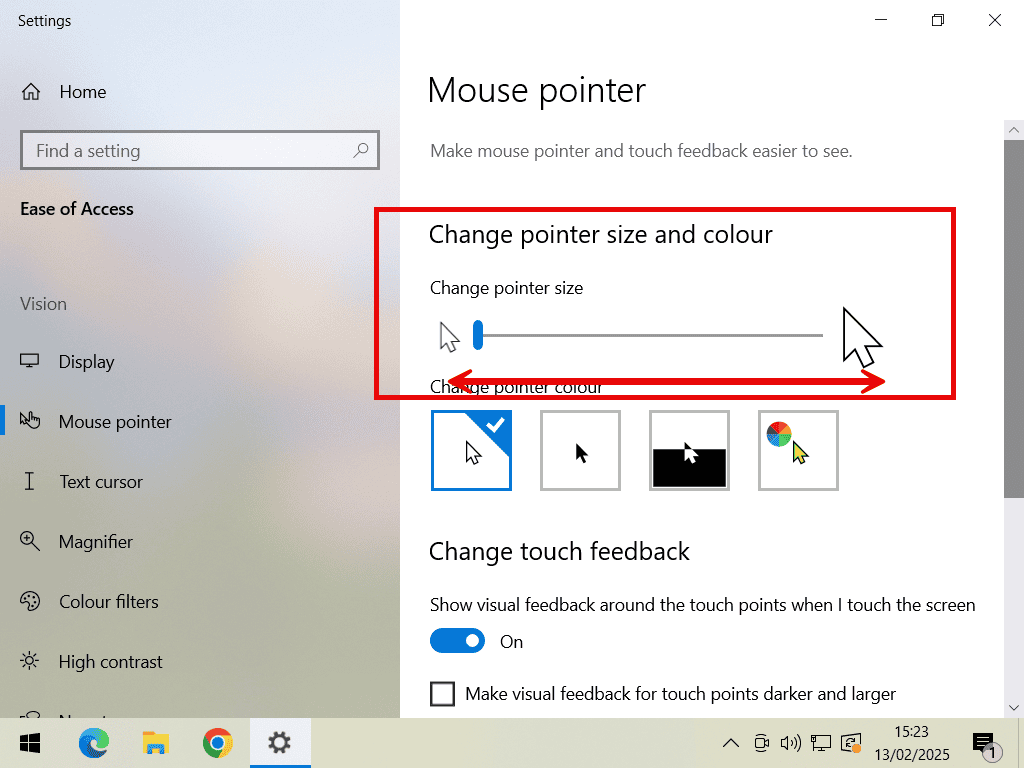

You Can Change Your Mind At Any Time.
Changing the double click speed and or the pointer size isn’t a “set once and that’s it” decision.
You can always change your mind later if you don’t like the new mouse settings. In fact you can experiment as often as you like with these settings.
Keyboard Basics
We all pretty much know how to use a computer keyboard. The alphanumeric keys, along with the punctuation marks and various symbols are fairly obvious.
However there are a few keyboard keys that you should know.
Although at the moment you probably do most everything on your computer with the mouse, using the keyboard does actually make it easier and quicker.
Find these keys on your keyboard.
- The Tab key – often marked with two opposing arrows but sometimes has Tab written on it.
- The Shift key – an upward-facing arrow or the word Shift.
- Control Key – often marked as CTRL.
- The Windows key – marked with the Windows logo, but that has changed over the years. See below.
- The Alt key – always marked Alt.
- Enter or Return key – could be marked with either a crooked arrow, Enter or Return or a combination of the three.
- Arrow keys – marked with the direction arrows.
- The Backspace key – marked with an arrow pointing left or the word Backspace.
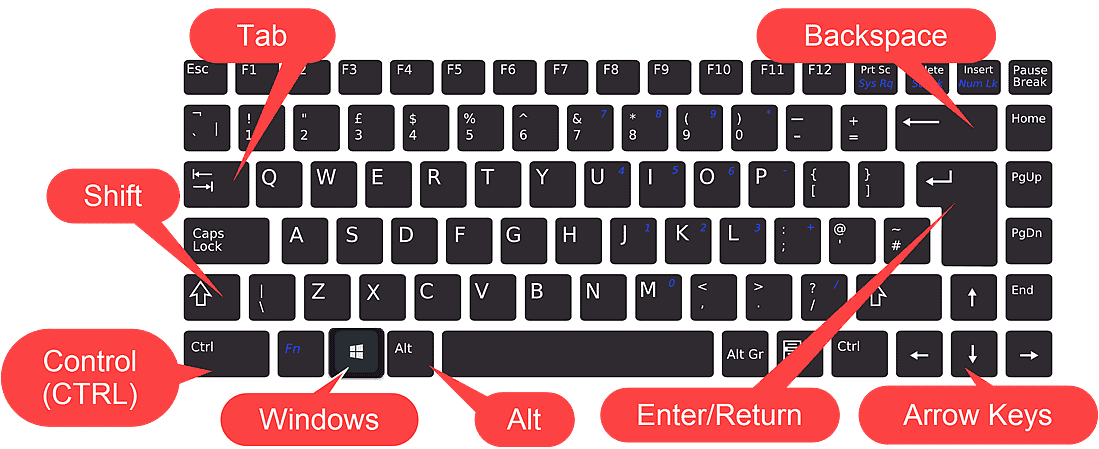
Summary
In this first page of the home computer beginners course we’ve learned how to make a few changes to the mouse settings. That’s an important first step to taking control of the PC. It’s really not so hard to do.
On the next page we’ll be looking at the Start menu. How to arrange it so that it works for you rather than simply confusing everything.
 Can You Help To Grow This Website?
Can You Help To Grow This Website?
This website needs to grow, it needs more and more visitors in order to survive. Can you help to grow it?
If you know anyone that might gain something from following along with the home computer course, then please pass it on.
Tell them about At Home Computer or post it on your Facebook page or any other social media sites. Personal recommendations count very highly and any help you can give would be greatly appreciated.
Thanks, Jeff
